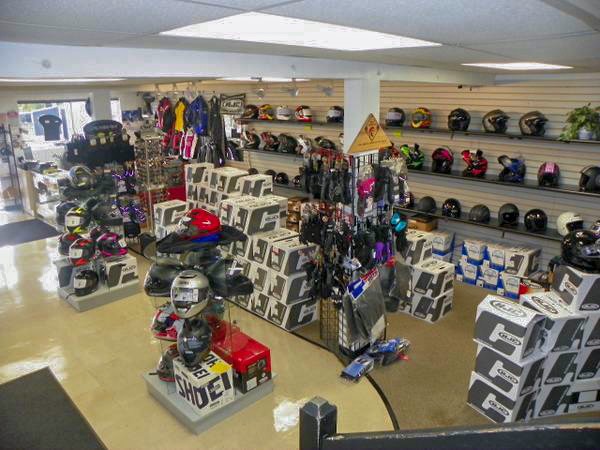A Thorough Look at Bike Components: What Every Motorcyclist Ought To Know
A detailed understanding of motorbike components is not merely valuable yet critical for any type of rider aiming to make best use of efficiency and security. Each part, from the engine's intricate operations to the integrity of brake systems, plays an essential function in the general experience and functionality of the bike.
Recognizing the Engine
The engine, frequently concerned as the heart of a bike, is a complicated setting up of elements that function in consistency to transform fuel into motion. At its core, the engine's main function entails the combustion process, where air and fuel mix and fire up within the cyndrical tubes, leading to regulated surges that drive the pistons. These pistons relocate up and down, transforming chemical power into power, which subsequently transforms the crankshaft, inevitably powering the bike.

Understanding the details of a bike engine is essential for cyclists and fanatics alike. It not only gives understanding into just how motorcycles achieve their impressive power and rate but likewise aids in efficient upkeep and troubleshooting, ensuring durability and integrity when driving.
Suspension Solutions
While the engine powers the motorcycle, the shock absorber plays a crucial function in making certain a controlled and smooth trip. The suspension system is in charge of taking in shocks from the road surface, maintaining tire get in touch with, and supplying security throughout cornering and stopping. It makes up two major components: the front forks and the rear shock absorbers.
Front forks are typically telescopic, consisting of a spring and moistening device. The spring compresses and extends to take in bumps, while the moistening system manages the movement to stop too much jumping. This combination makes sure the front wheel remains touching the roadway, supplying premium handling and convenience.
The back suspension, generally a monoshock or twin-shock arrangement, functions in a similar way to the front suspension however is customized to support the bike's weight and cyclist - motorbike shop. It handles rear wheel activity, adding to the bike's total equilibrium and responsiveness
Suspension systems can be flexible, permitting motorcyclists to tweak preload, compression, and rebound setups according to personal preferences and riding conditions. This adjustability improves efficiency by enhancing the motorbike's communication with diverse surfaces. In summary, an efficient shock absorber is critical for cyclist convenience, security, and the motorbike's dealing with prowess.
Brake Components
Quiting power is a fundamental facet of motorbike safety and security, and it rests on the efficiency of the brake parts. The primary aspects of a bike's stopping system include the brake pads, calipers, rotors, and master cylinder. mx parts nz. Each of these parts plays an essential function in making sure reliable stopping efficiency
Brake pads are essential as they develop the essential friction versus the blades to decrease or stop the motorbike. Built from products such as sintered steel or natural compounds, the selection of brake pad material substantially influences performance and long life. Calipers, real estate the brake pads, use stress to the pads when the brake lever is involved, promoting contact with the blades.
The blades, usually made from stainless steel or actors iron, are mounted to the wheels and offer as the surface versus which the brake pads press. Their layout, consisting of diameter and thickness, impacts warm dissipation and quiting power. The master cyndrical tube, linked to the brake lever, produces hydraulic stress sent via brake lines to the calipers, making certain constant braking force.
Normal upkeep and evaluation of these elements are essential for optimum performance, avoiding wear and guaranteeing biker security on the road.
Tire Essentials
Beyond preserving durable stopping systems, guaranteeing optimal tire efficiency is just as considerable for motorcycle safety and efficiency. Tires are the sole get in touch with factor between the motorbike and the road, making their problem pivotal in managing, security, and overall ride top quality.

Additionally, consider the tire's age. Rubber compounds weaken street bike riding gear in time, even if step appears appropriate. Check the sidewall for the DOT (Department of Transportation) code to determine the tire's age. Commonly, substitute is recommended every 5 years, no matter of wear. Investing focus in these tire essentials not only optimizes performance but additionally dramatically improves riding safety.
Electrical Solutions
In the world of motorbike maintenance, the electrical system plays an essential function in guaranteeing reputable performance and cyclist security. This detailed network incorporates necessary elements such as the battery, alternator, starter motor, and wiring harness. Each component is vital for the smooth operation of the motorcycle, from ignition to lights and communication with various sensors.
The battery functions as the heart of the electrical system, giving the essential power to begin the engine and run devices. Regularly inspecting the battery's powersports parts voltage and terminals for deterioration is important to stop unexpected failures. The alternator, on the various other hand, reenergizes the battery while the engine is running, making sure a constant power supply.
The starter motor is in charge of initiating engine procedure, transforming electrical energy into power. To keep it, bikers need to focus on any kind of uncommon noises or troubles throughout start-up. At the same time, the electrical wiring harness serves as the automobile's nervous system, connecting all electric parts. Guaranteeing that the wires are cost-free and undamaged from damages is important for protecting against short circuits and ensuring functionality.
Final Thought

Stopping power is a basic aspect of bike safety, and it pivots on the efficiency of the brake parts. The key components of a motorbike's braking system include the brake pads, calipers, rotors, and master cylinder.Brake pads are necessary as they develop the needed friction versus the blades to slow down or quit the motorbike.Beyond preserving robust stopping systems, ensuring optimum tire efficiency is equally considerable for bike safety and effectiveness.In the realm of motorcycle upkeep, the electric system plays an important role in making sure trusted performance and motorcyclist safety.